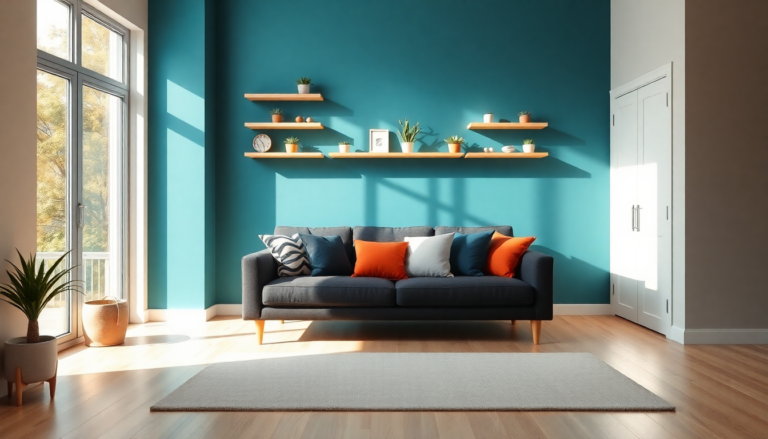Argomenti trattati
Accent walls have sparked quite the debate among interior designers and homeowners. Some people are all in for the boldness of a standout wall, while others see it as a design misstep. But let’s be honest—when done right, an accent wall can truly transform a space, adding character and dimension that draws the eye and enhances the overall vibe. Ready to explore some creative accent wall ideas? Let’s dive into how this design choice can be stylish, innovative, and a true reflection of your personal style.
Understanding the Appeal of Accent Walls
So, what’s the big deal about accent walls? At their core, they create a focal point in a room. Instead of sticking to the standard approach of painting all walls the same color, an accent wall introduces a playful element that can completely change how a space feels. This trend is especially appealing in open floor plans, where an accent wall can help define areas while keeping that airy feel.
In my experience, the data tells us a fascinating story: homeowners who incorporate accent walls often report a boost in satisfaction with their living spaces. The psychology of color plays a crucial role here; certain hues can evoke emotions, influence mood, and even alter how we perceive the size of a room. If you’re hesitant about jumping on the accent wall bandwagon, why not experiment with various textures and patterns? You might be surprised by how they can enhance your environment.
Innovative Ideas for Creating Accent Walls
The possibilities for accent walls are virtually endless, spanning from paint and wallpaper to more unconventional materials like wood and stone. For example, a simple yet effective approach is to paint one wall in a bold hue, instantly energizing the space. Or consider wallpaper with intricate designs that can add depth and interest, making the room feel more inviting.
One standout strategy? Using natural elements like wood or stone for a tactile experience. A stone slab accent wall can serve as a stunning backdrop that not only captivates attention but also adds warmth and texture. Similarly, wooden panels can create a cozy atmosphere, perfect for spaces meant for relaxation.
If you’re after something artistic, why not use fabric or textiles as an accent wall? This method not only softens the room but can also improve acoustics, making it an ideal choice for bedrooms or home offices. Layering different materials adds visual interest and can significantly shift the ambiance of the space.
Case Studies: Successful Accent Wall Implementations
Let’s take a closer look at some real-life examples that showcase the transformative power of accent walls. In a contemporary California home, designer Francesca Grace opted for a navy blue accent wall in a bedroom, beautifully contrasting with the white walls. This choice not only created visual depth but also framed the room’s artwork, allowing the gallery vibe to shine.
Another remarkable example comes from a cozy office nook designed by Suzanne Kasler, who covered the back wall in striped fabric. The blue and tan stripes introduced a dynamic element that energized the workspace while also serving as a subtle pinboard for notes and reminders.
And let’s not forget about the dining room designed by Amber Lewis, where botanical wallpaper featuring local flora brought the outdoors inside, creating a serene atmosphere. This attention to detail underscores the importance of aligning design choices with personal narratives and environmental context.
Practical Tips for Implementing Accent Walls
Thinking of adding an accent wall? It’s crucial to keep the overall theme and color palette of the room in mind. Choose colors and materials that harmonize with your existing decor to ensure a cohesive look. Also, consider the wall’s orientation and how natural light impacts it throughout the day. A well-lit accent wall can serve as a striking feature, while a poorly lit one might detract from the room’s appeal.
If you want to create an accent wall without committing to permanent changes, removable wallpaper or decals can be a flexible solution. This way, you can experiment without worrying about making a long-term design mistake. Art or large-scale prints can also serve as great alternatives to traditional paint or wallpaper.
Ultimately, the key performance indicators (KPIs) for evaluating the success of an accent wall include how well it enhances the room’s aesthetic, the emotional response it elicits, and the overall satisfaction of those living in the space. Regularly reassessing these factors can lead to further optimizations in your home design, ensuring that your living space always reflects your evolving tastes.

